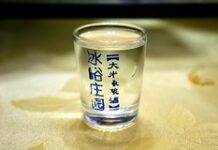Baijiu is a tree with many branches, although it is often discussed as a single type of spirit. Baijiu styles and types can be worlds apart in ingredients, production methods and flavours. However, it is necessary to know about Qu before we get a classification of Baijiu.
Qu, or the brewer’s yeast, is the key to turning grains into alcohol. Qu, however, contains much more than just yeast. Qu is made Qu by crushing moistened grains into a paste. The process forms them into clumps by continuously adjusting their moisture level within a controlled environment.
The chunks draw yeast, bacteria and other microorganisms from the air by the end of the process. How Qu creates subtle differences in taste and recipes are the most carefully guarded secrets in the industry.
Thirteen Categories of Baijiu
Here are the most popular 13 categories of Baijiu based on how they smell.
- Nong Xiang or Strong Aroma: This type of Baijiu is fermented in earthen pits. It is the most popular and widely produced type of Baijiu made in China. There are two variations of strong-aroma baijiu. One is a single grain baijiu (danliang). And the other is the mixed grain baijiu (zaliang) type distilled from one or more grains. Nong Xiang baijiu is fiery in taste along with a fruity sweetness. Nong Xiang baijiu has intimate ties to China’s Sichuan in the southwest, the country’s largest alcohol-producing province. And to the eastern regions of Anhui, Jiangsu and Shandong.
- Qing Xiang or Light Aroma: Qing Xiang baijiu is the second-biggest category produced by volume in China. It is distilled from sorghum and rice husks. And fermented in ceramic jars. It is fermented with Big Qu made from barley and peas. Qing Xiang typically has a mild floral sweetness. This type of Baijiu is commonly associated with northern China.
- Xiao Qu Qing Xiang or Xiao-Qu Light Aroma: Xiao-Qu Light Aroma Baijiu is another hybrid type of baijiu. It is primarily distilled from sorghum. And fermented in pots with rice Qu. Xiao-Qu Light Aroma Baijiu retains light aroma’s mild floral character. This type of baijiu contains some of the mellowness of rice aroma.
- Jiang Xiang or Sauce Aroma: Sause-aroma baijiu derives its name from its distinct and lingering fragrance. It is said to resemble soy sauce. Sause-aroma baijiu is a mellow spirit with a layered taste of herbs and fermented beans. It has a long aftertaste. Sauce-aroma production is labour-oriented and is resource-intensive. Sause-aroma baijiu involves multiple fermentation processes in underground pits lined with stone bricks. This type of Baijiu is closely associated with northwestern Guizhou and southeastern Sichuan.
- Mi Xiang or Rice Aroma: Mi Xiang baijiu is most closely related to the huangjiu region in its production process. The Rice Aroma baijiu is distilled from long-grain rice, glutinous rice or a combination of the two. It is fermented with tiny rice Qu. And often contains Chinese medicinal herbs. This type of Baijiu is aged in limestone caves. Rice Aroma baijiu is frequently infused with fruits, herbs, tea flowers, or TCM. The rice aroma is smooth, mild, and resembles Japanese sake in taste. Mi Xiang is produced throughout southern China. It is most closely linked to Guangdong and Guangxi provinces in southeast China.
- Feng Xiang or Phoenix Aroma: The ‘West Phoenix Spirit’ is named Xifengjiu. It comes from Fengxiang and Shanxi Province. Phoenix aroma combines aspects of the light and robust aroma types of baijiu. This type of baijiu is primarily distilled from sorghum fermented in earthen pits. Along with barley, wheat, and pea-based Qu. Phoenix-aroma baijiu producers replace the mud fermentation pits mud lining each year. And employ a short ten-day fermentation method. Phoenix-aroma baijiu, following distillation, is aged in the ‘seas of alcohol.’ These are giant rattan baskets filled with cloth sacks hardened with pig’s blood, vegetable oil, and beeswax. Feng Xiang baijiu is well-known for its fruity aromas, expanding finishes, and grainy tastes.
- Jian Xiang or Mixed Aroma: This type of baijiu is a less distinct category than a combination of categories. Mixed-aroma baijiu is produced by combining production techniques or blends from two or more different baijiu categories. Mixed aromas are hybrids of strong and sauce aromas. Either of these two spirits in the making may play a predominant role.
- Chi Xiang or Chi Aroma: Chi aroma’s name refers to douchi. Douchi is a salty Chinese condiment made from fermented beans. It was invented in Guangdong Province in 1895. In all respects save one, Chi aroma is indistinguishable from rice-aroma baijiu. It is aged and suffused with pork fat. This is why the spirit is sometimes called fat aroma (Zhi Xiang). Chi Aroma has an oily body with subtle overtones of bacon.
- Zhima Xiang or Sesame Aroma: This type of baijiu was first made in 1957. Sesame Aroma baijiu is primarily made from sorghum with wheat Qu. Millets and barley are also added sometimes. The fermentation process is carried out in a stone-lined pit with a mud bottom. The process develops a distinct flavour depending on depth and position in the pit. Zhima Xiang is a close relative of sauce-aroma baijiu. But it is fermented at higher temperatures for a shorter period of time. And therefore, it has a more charred and nutty flavour.
- Yao Xiang or Medicine Aroma: Yao Xiang baijiu uses a sorghum base. The alcohol is fermented in two pits. The larger pit performs fermentation using Big Qu. The smaller pit is filled with high-alkaline rice Qu. And white mud mixed with wild peach juice. The pit is sealed with coal. The two mashes are combined and distilled after extraction from the pit. Yao Xiang is a layered type of baijiu that marries a sweet and savoury flavour.
- Fuyu Xiang or Extra-Strong Aroma: Extra-Strong Aroma baijiu is distilled from sorghum and glutinous rice fermented with Big Qu and small medicinal Qu. It is aged for at least three years and has an intense earthy fragrance with a spicy-sweet taste. Master blender Madame Wu Xiaoping coined the category’s name. Extra-strong aroma baijiu combines at least three types of baijiu, while mixed aroma combines two aspects of baijiu categories.
- Te Xiang or Special Aroma: This type of baijiu is fermented from rice and Big Qu. It is fermented in pits of red bricks joined with cement and sealed with mud. The fragrance of Special Aroma is earthy. But the taste is light, along with a rich and slightly tart aftertaste.
- Laobaigan Xiang or Laobaigan Aroma: In almost every respect, Laobaigan Aroma is similar to light-aroma baijiu. Except that it uses wheat instead of barley and peas to make its Qu. Laobaigan Aroma is also aged for a shorter period of time and typically no more than six months. It is usually bottled at over 65% ABV and has a fruity flavour overshadowed by a searing alcoholic flame.
Know and understand that every single brand of Baijiu tastes quite different. It is because the making process is different. The smallest differences in environment and ingredients lead to significant changes in flavor. The other fact is that China’s signature booze has not been officially categorized how wines, whiskeys and other spirits have been. You will have to try some types of baijiu to figure out just what kind of Baijiu you want to be savoring.







